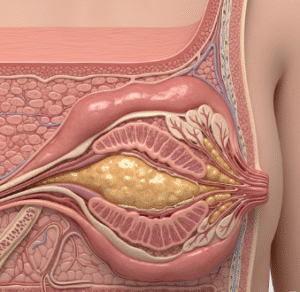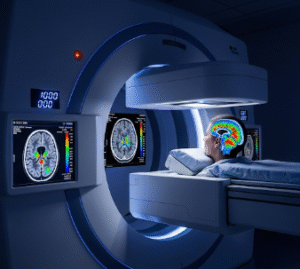Overview
Systolic dysfunction refers to the impaired ability of the heart’s left ventricle to contract and pump blood effectively. It is a major cause of heart failure and is often identified by a reduced ejection fraction (HFrEF). Early diagnosis and treatment are crucial to manage symptoms and prevent complications.
What is Systolic Dysfunction?
Systolic dysfunction is a form of heart failure in which the heart’s main pumping chamber, the left ventricle, loses its ability to contract normally. As a result, less oxygen-rich blood is pumped out to the body. It can be caused by a variety of heart conditions, especially those that damage the heart muscle.
Symptoms
Common symptoms include:
- Shortness of breath (especially during exertion or lying down)
- Fatigue and weakness
- Swelling in legs, ankles, or feet (edema)
- Rapid or irregular heartbeat
- Reduced ability to exercise
- Persistent cough or wheezing
Causes
- Coronary artery disease (CAD)
- Previous heart attack (myocardial infarction)
- Cardiomyopathy (dilated or ischemic)
- Long-standing high blood pressure
- Valvular heart disease
- Excessive alcohol use
- Thyroid disease or viral infections affecting the heart
Risk Factors
- High blood pressure
- Diabetes
- Smoking
- Obesity
- Sedentary lifestyle
- Family history of heart disease
- Excessive alcohol or drug use
Complications
- Congestive heart failure
- Arrhythmias (irregular heartbeats)
- Blood clots and stroke
- Kidney damage
- Liver congestion
- Sudden cardiac arrest
Prevention
- Control of blood pressure and cholesterol
- Smoking cessation
- Regular physical activity
- Healthy diet low in salt and fat
- Routine screening if at high risk
- Managing underlying conditions like diabetes or thyroid disorders
Treatment Options in Korea
Korea provides modern, guideline-based treatments for systolic dysfunction through specialized cardiology centers and tertiary hospitals.
Diagnosis
- Echocardiogram – measures ejection fraction and wall motion
- Electrocardiogram (ECG) – detects rhythm abnormalities
- Cardiac MRI or CT – provides detailed heart images
- BNP/NT-proBNP blood test – assesses heart failure severity
- Cardiac catheterization – evaluates coronary artery disease
Treatment Approaches
- Medications
- ACE inhibitors or ARBs
- Beta-blockers (e.g., carvedilol, bisoprolol)
- Aldosterone antagonists
- SGLT2 inhibitors (e.g., dapagliflozin)
- Diuretics for fluid overload
- Device Therapy
- Implantable Cardioverter Defibrillator (ICD) for arrhythmia prevention
- Cardiac Resynchronization Therapy (CRT) in selected cases
- Surgery
- Coronary artery bypass grafting (CABG) if CAD is present
- Valve repair or replacement if valvular disease is the cause
- Lifestyle Management
- Salt-restricted diet
- Fluid management
- Supervised cardiac rehabilitation













